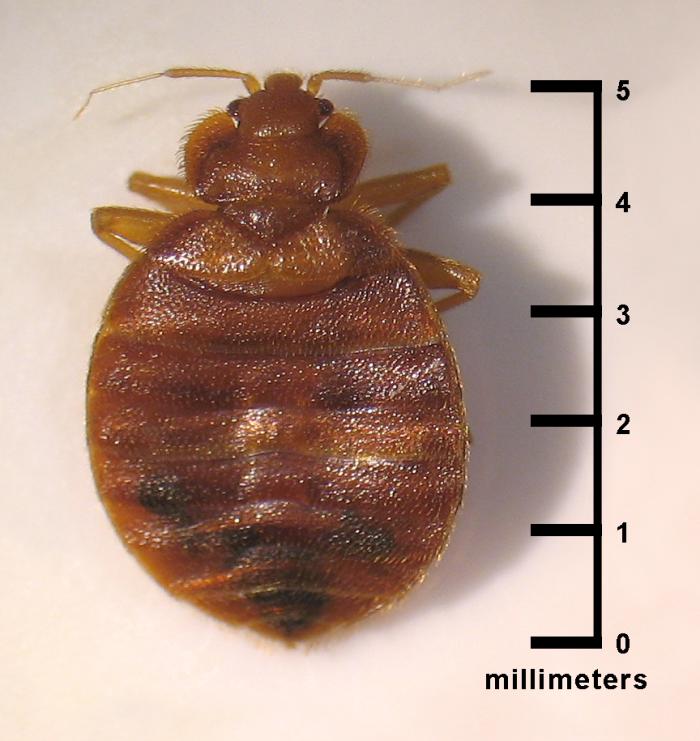Bed Bugs
Small insects that feed on human blood but do not transmit diseases
Overview
Bed bugs live anywhere people do. They often spread when people travel, hiding in luggage and clothing, then moving to homes or hotels. Bed bugs can survive for months without food or water and can handle freezing temperatures for several days.
Bed bugs are small insects that feed on human blood. Adult bed bugs are reddish-brown, wingless, and about the size of an apple seed. They hide in cracks of furniture, floors, walls, suitcases, or clothing. Baby bed bugs are see-through at first and turn brown as they grow. When they feed, their bodies swell and turn bright red.
Bed bugs are becoming a bigger problem in Alaska, causing stress and expense. The good news is they don’t spread disease. The best way to prevent them is to regularly check for signs of an infestation.

Symptoms & diagnosis
Most bed bug bites are initially painless, but they may turn into large, itchy skin welts. These wounds do not have a red spot in the center like flea bites. Some people don’t develop welts at all and can carry bugs without knowing it.
You may see the bed bugs themselves or you may also notice small bloodstains from crushed insects, or dark spots from their droppings on linens or bedspreads. It is often hard to see them because they hide in or near beds, furniture, and in cracks in the walls.
Although bed bugs are a nuisance, they are not known to spread disease.
Treatment
Treating bites
Bed bug bites may cause inflammation in some people but typically don't need medical treatment. To treat a bite, apply antiseptic creams or lotions to reduce itching and avoid scratching to prevent infections. For those with itchy reactions, an antihistamine can help relieve the itching.
Treating an infestation
Use a bright flashlight to look for bugs or their dark droppings in bedroom furniture. You can use a hot hair dryer to force them out of hiding spaces and cracks. Also check these areas of your home:
- Mattress and mattress pad
- Behind your headboard and box spring
- Along bedroom baseboard cracks
- In, on, under, and behind other bedroom items like window and door casings, pictures, moldings, nearby furniture, loose wallpaper, cracks in plaster and partitions, and other clutter
Clean areas where bed bugs are likely to hide:
- Wash bedding, linens, curtains, rugs, carpets, and clothes in hot water and dry them on the highest dryer setting to kill any remaining bugs. Soak delicate clothes in warm water with lots of laundry soap for several hours before rinsing them.
- Scrub mattress seams with a stiff brush, vacuum mattresses, bed frames, focusing on cracks and crevices. If bed bugs are found, cover the mattress with a zippered, allergen-rated cover and the box spring with a vinyl cover for at least one year, or dispose of the box spring if no cover is available.
- Throw away infested items or clutter that can’t be cleaned. Make sure the items are sealed tightly in plastic garbage bags before placing them in an outside container
- Repair cracks in plaster and loose wallpaper.
Important: Be careful when using pesticides yourself because they can be harmful to people and pets.
Prevention
- Inspect used furniture for bed bugs before bringing it into your home
- Never bring discarded bed frames, mattresses, box springs, or upholstered furniture into your home
- Always wash clothing and bedding immediately after returning from a trip
When you stay in a hotel or some other place of lodging, follow these precautions:
- Store your suitcases on luggage racks or in the bathroom
- After check-in, look for bed bugs behind the headboard and pull back the bed sheets to look for blood smears or little black spots
- Check the seams of the mattress and box springs as well
- If you see any evidence of bugs, ask for another room
Reporting
Bed bugs are not a reportable disease.